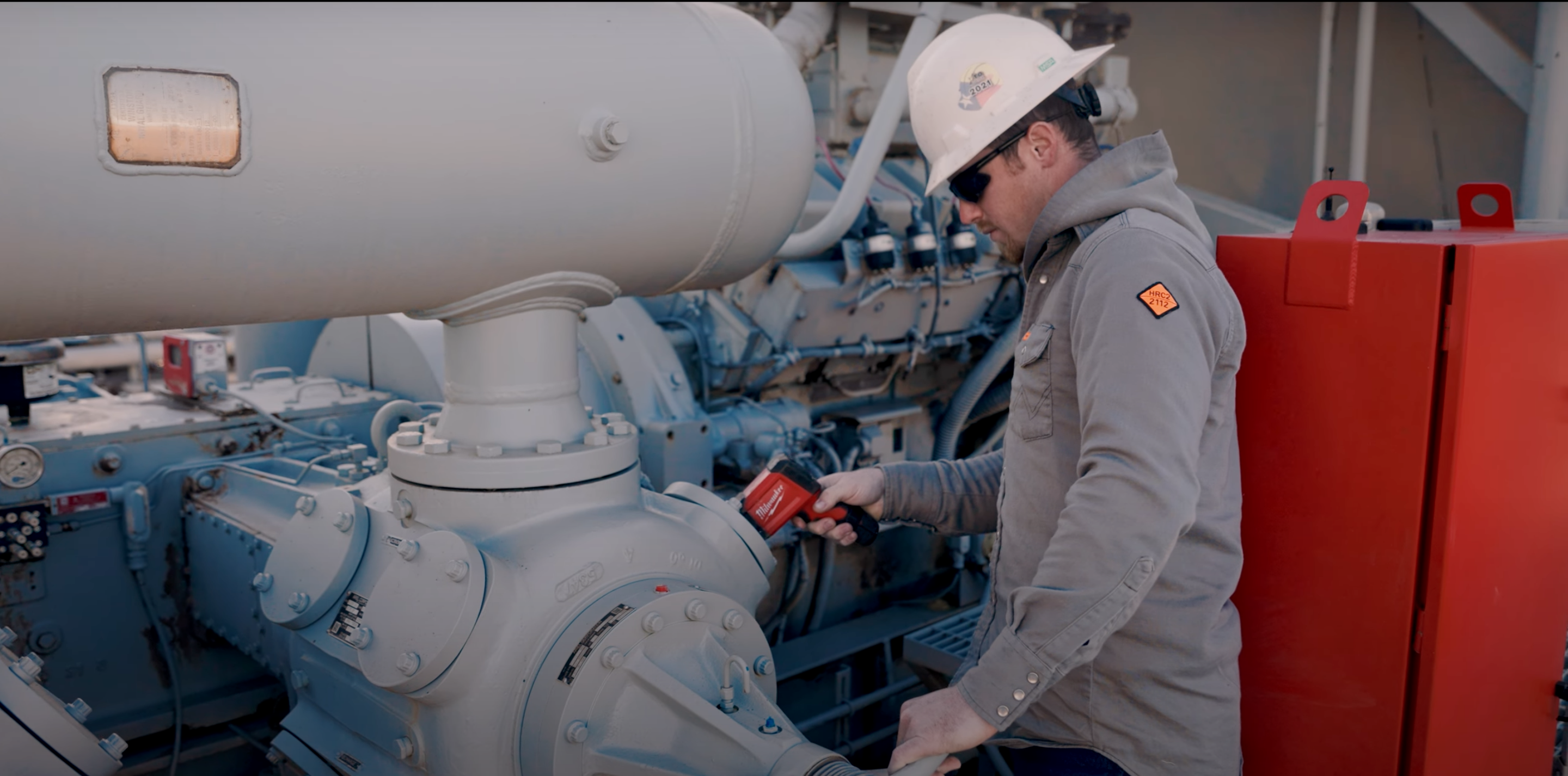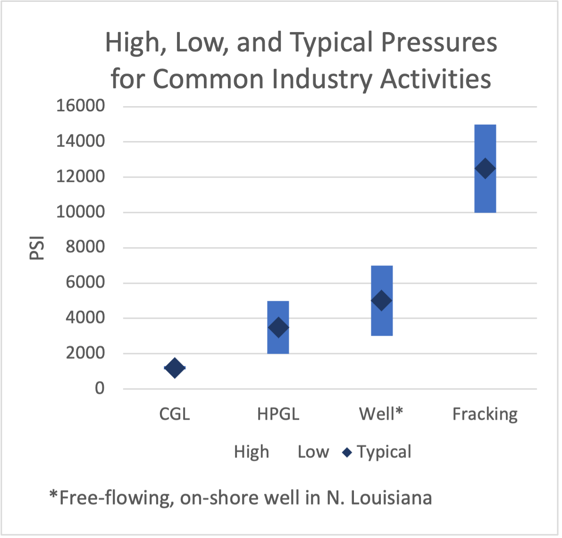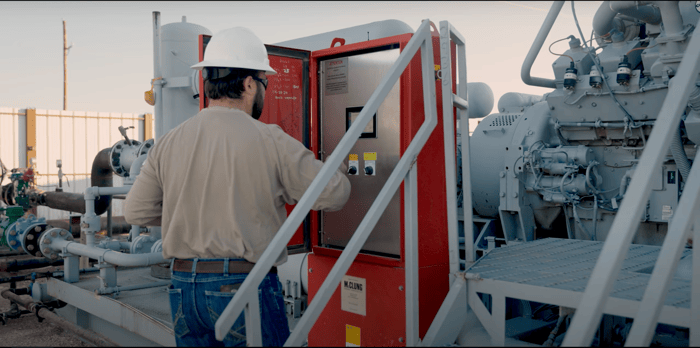Depending on your operating conditions, you may be considering High-Pressure Gas Lift (HPGL) to increase your production. It requires less maintenance and has a lower risk of shutdowns than downhole systems, like ESPs. And production is better than conventional gas lift (CGL).
But introducing high-pressure into your system? How safe is that?
Quite safe. Because although HPGL uses higher pressures than CGL, the pressures used for HPGL applications are less than other pressures normally seen within the industry.

High, but not too high
CGL operates around 1,200 psi. Haynesville wells flow at 7,000 psi at the surface. Fracking occurs at 10,000 psi, or higher. 
So what about HPGL?
It varies depending on your unique situation. The range is between 2,000 and 5,000 psi. Pressures on the lower end, up to 3,500 psi are often enough to achieve production goals. In certain circumstances, HPGL requires pressures up to 5,000 psi.
At less than 5,000 psi, HPGL pressures are in-line with, and often much less than, other pressures seen in our industry.
These comparisons offer perspective, but still, how do you know HPGL is safe?

Estis Compression safety standards
Your operation’s safety is your top concern. It’s ours, too. Here’s how we let you know our compressors are safe for your sites.
1. Estis designs and fabricates its compressors according to stringent industry codes and standards
As you’re aware, codes and standards include margins of safety and rigorous design requirements. We follow:
- ASME Boiler and Pressure Vessel Code Section VIII, Division 1 Process for pressure vessels
- ASME B31.3 for piping
- API 618 (5th Edition) Design Approach 2 for vibration analysis
In accordance with these codes, fabricated components undergo Non-Destructive Examinations (NDE) to validate the product conforms to the design.
2. Estis thoroughly tests our components
We hydrotest all fabricated process components to prove design and fabrication integrity. All process pipe and pressure vessels are hydrotested to 1.3 times the Maximum Allowable Working Pressure (MAWP).
We x-ray pipe welds according to ASME B31.3. If we’re unable to x-ray the welds, we use Particle Inspection (MPI) to verify weld integrity.
3. Estis compressors have redundant safety features
A control panel monitors process pressures. It shuts down the compressor if pressures exceed the design limits. As a back-up safety feature, we install Pressure Relief Valves (PRVs). These are set at or below the MAWP of the lowest rated component.
In case of an emergency shut down (ESD), the compressor shuts down at the same time as the ESD, as long as it’s connected to the ESD system . If the compressor isn’t connected to the ESD system, it shuts itself down when it senses a high-pressure limit approaching. Either way, the compressor safely shuts down without exceeding pressure limits.
4. Estis helps customers perform hazard assessments
A Process Hazards Analysis (PHA) or a Hazard and Operability study (HAZOP) is a great tool to review the design details of the equipment, the potential hazards, and how they’re mitigated by the engineering controls.
Ready to learn more?
While it’s been used offshore for decades, HPGL is still considered a newer technology for onshore artificial lift oil production. Yet single-point HPGL is the simplest, most efficient and productive lift system with the lowest total cost of ownership and the least downtime.
With companies like Estis making wellhead compression affordable, customizable, and reusable, using HPGL for onshore production is ready to take off. If you’d like to take advantage of this emerging trend, check out our evaluator, to see how you can improve your productivity and reduce costs.




